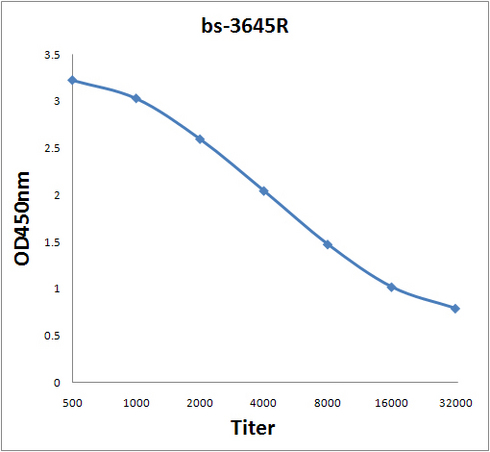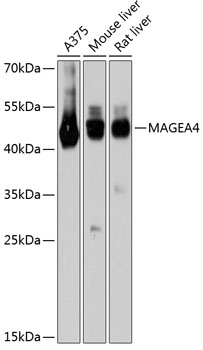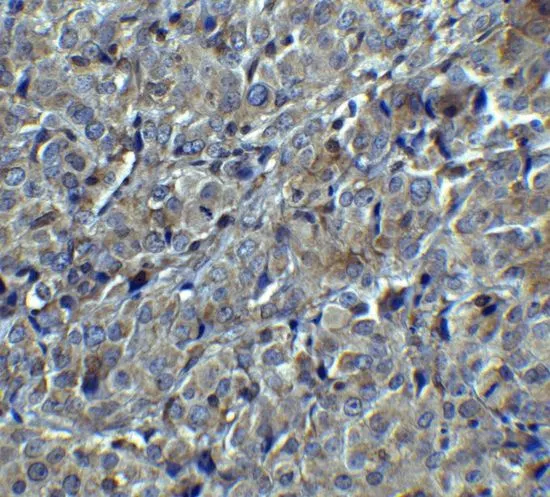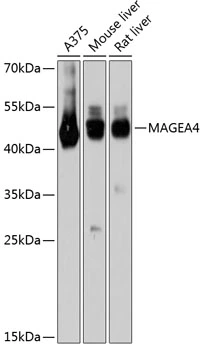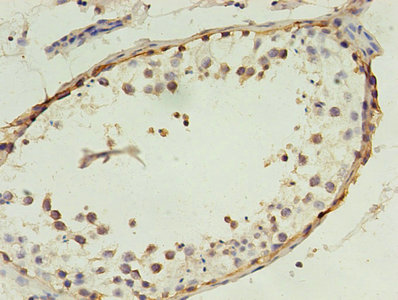MAGEA4 antibody
GTX116357
ApplicationsImmunoFluorescence, Western Blot, ImmunoCytoChemistry, ImmunoHistoChemistry, ImmunoHistoChemistry Paraffin
Product group Antibodies
ReactivityHuman
TargetMAGEA4
Overview
- SupplierGeneTex
- Product NameMAGEA4 antibody
- Delivery Days Customer9
- Application Supplier NoteWB: 1:500-1:3000. ICC/IF: 1:100-1:1000. IHC-P: 1:100-1:1000. *Optimal dilutions/concentrations should be determined by the researcher.Not tested in other applications.
- ApplicationsImmunoFluorescence, Western Blot, ImmunoCytoChemistry, ImmunoHistoChemistry, ImmunoHistoChemistry Paraffin
- CertificationResearch Use Only
- ClonalityPolyclonal
- Concentration1 mg/ml
- ConjugateUnconjugated
- Gene ID4103
- Target nameMAGEA4
- Target descriptionMAGE family member A4
- Target synonymsCT1.4, MAGE-41, MAGE-X2, MAGE4, MAGE4A, MAGE4B, melanoma-associated antigen 4, MAGE-4 antigen, MAGE-41 antigen, MAGE-X2 antigen, cancer/testis antigen 1.4, cancer/testis antigen family 1, member 4, melanoma antigen family A, 4, melanoma antigen family A4
- HostRabbit
- IsotypeIgG
- Protein IDP43358
- Protein NameMelanoma-associated antigen 4
- Scientific DescriptionThis gene is a member of the MAGEA gene family. The members of this family encode proteins with 50 to 80% sequence identity to each other. The promoters and first exons of the MAGEA genes show considerable variability, suggesting that the existence of this gene family enables the same function to be expressed under different transcriptional controls. The MAGEA genes are clustered at chromosomal location Xq28. They have been implicated in some hereditary disorders, such as dyskeratosis congenita. At least four variants encoding the same protein have been found for this gene. [provided by RefSeq]
- ReactivityHuman
- Storage Instruction-20°C or -80°C,2°C to 8°C
- UNSPSC12352203
References
- Eladak S, Moison D, Guerquin MJ, et al. Effects of environmental Bisphenol A exposures on germ cell development and Leydig cell function in the human fetal testis. PLoS One. 2018,13(1):e0191934. doi: 10.1371/journal.pone.0191934Read this paper

